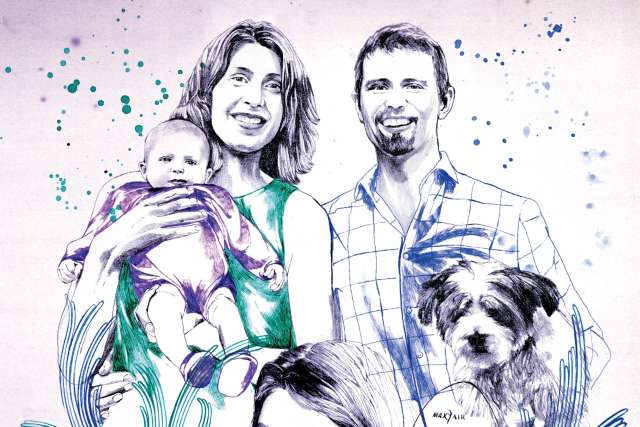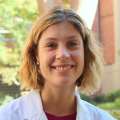THE COVID-19 PANDEMIC HAS TOUCHED THE LIVES OF EVERYONE. IT CERTAIN - LY TOUCHED MINE, in ways both professional and personal. I remember going to dinner with colleagues in December 2019, not long before the pandemic officially started, and casually talking about cases of “unknown pneumonia” in Wuhan, China. The initial reports noted that there were no instances of human-to-human transmission. We all had our own theories about the etiology of the outbreak but thought it as likely viral, possibly due to a novel coronavirus.
With such limited information early on, it was impossible to predict what would happen next. We prepared as best we could for what we believed was to come, training staff how to wear personal protective equipment (PPE), preparing protocols and stockpiling masks and face shields.
Early in my career, as an Epidemic Intelligence Service officer at the Centers for Disease Control and Prevention (CDC), I worked in several areas where there were viral outbreaks. I conducted public health investigations abroad in Uganda, Haiti, Brazil, Guinea and Liberia, and closer to home in Wisconsin. While these experiences helped me to lead UCLA Health’s infection-prevention response to the COVID-19 pan - demic, I was used to responses with defined time frames and involving known pathogens. We knew that Zika virus was transmitted by mosquitoes and that Ebola virus was only contagious when people devel - oped symptoms. Controlling these virus epidemics was challenging, but we had defined protocols for things like contact tracing and PPE.
COVID-19 was different.
As our knowledge about COVID-19 transmission evolved, we realized how important it was to conserve our PPE during the global shortages. It became evident that asymptomatic and airborne transmission were valid concerns. We communicated about the importance of judicious use of PPE and adhering to CDC guidelines. Yet, I also understood the fear this pandemic was arousing as physicians, nurses and other medical staff requested higher levels of protection than were being recommended at that time, such as N95 masks and hazmat suits.
For me, the fear and uncertainty that my colleagues felt early in the pandemic really hit home in 2021, when I became pregnant with my daughter and was on the floors taking care of patients with COVID-19. I became acutely aware of the potential danger, but I also was confident in our PPE, isolation protocols and vaccines. I was fortunate to have received two doses of the vaccine and a booster prior to delivering my daughter, and I tried to encourage others to get their vaccine while pregnant.
The unpredictability of COVID-19 seeped into other areas of my personal life and had a profound impact. Because of travel restrictions and a hectic work schedule, weeks would go by and I wouldn’t see my husband, whom I had married six months before the pandemic began, as he was completing a fellowship in Palo Alto. I haven’t seen my eldest brother, who lives in Japan, for more than two years because of quarantine guidelines, and I am not sure when he will be able to meet his new niece.
And I thought about my mother, who passed away in October 2019, and felt grateful to have been able to say goodbye to her in person when so many others could not be at the bedside of loved ones or grieve with family members due to the pandemic.
Despite all these challenges, the pandemic has left me feeling hopeful and more appreciative of human ingenuity, community and resilience in the face of uncertainty. At UCLA Health, many multidisciplinary teams came together to solve problems during the pandemic, creating processes to conserve and reuse N95 masks, revising workflows in the ICUs to make them more efficient and reduce the need for additional PPE. Our colleagues on campus stepped up to help, too; faculty and students in the School of Engineering used 3D printers to make face shields and masks for personal use were sewn from surgical wrap.
Taking up paddle boarding helped me relieve the stress. Since paddle boards naturally require at least a six-foot clearance, I was able to go with friends, and also bring my dog, Arlo. Patiently steadying myself (and Arlo) on a 10-foot-long board wobbling in the swells was good practice for dealing with the instability of the pandemic. Moving over the water in the evening, I would hear boats in the marina ring their bells and blow horns at 7 p.m. as a tribute to essential workers. This was a way for people to connect with each other, and also provide some sense of regularity in an otherwise troublesome time.
When I heard these sounds, I felt uplifted and ready for the next challenge ahead.

